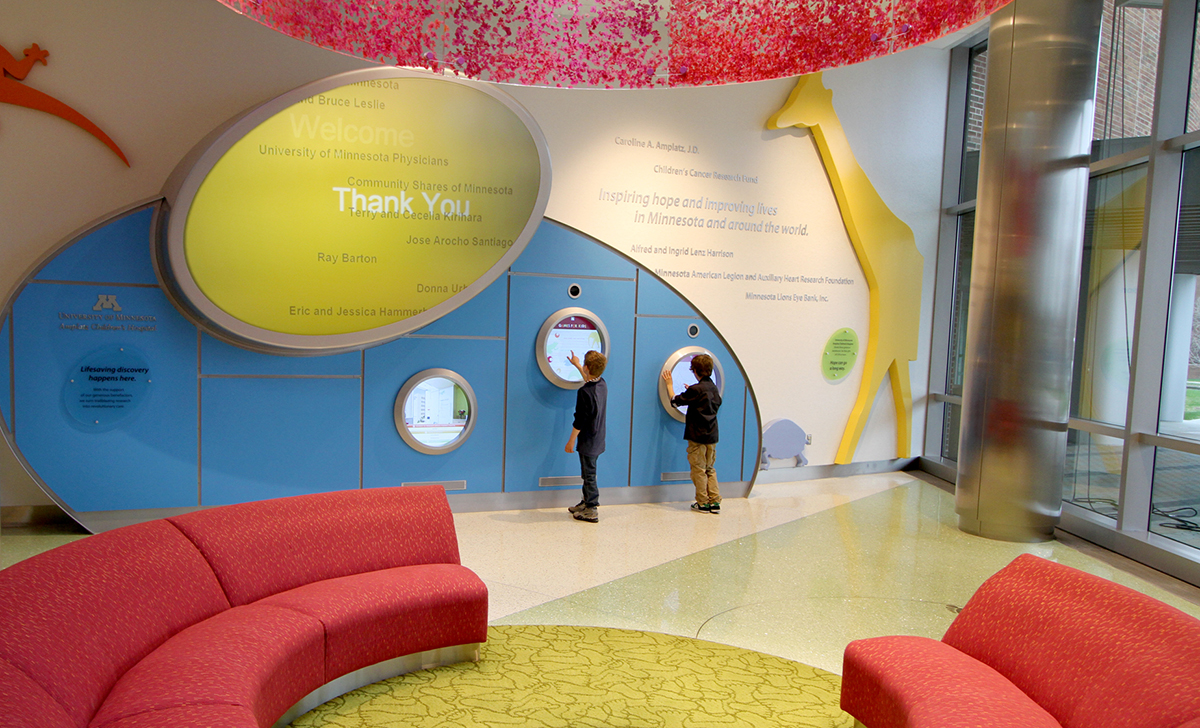
29 Oct Healthcare Design with Healing in Mind
Visiting healthcare facilities with generic, sterile, fluorescently lit environments can provide a less than comfortable experience for patients and visitors. Retail stores, hotels, corporate headquarters and almost every other commercial space make substantial investments in architecture and interior design to ensure that your experience creates a lasting positive association with their brand. Hospitals, largely private enterprises in America, must strive for these standards in addition to facing the added onus of preserving and enriching life at the most basic level. So why is it that many hospitals and clinics of the past fall short in their presentation and environmental design?
It would seem that this is in part due to the immense pressure for near perfect clinical outcomes as outlined in Atul Gawande’s seminal read Complications, and the massively inflated price of healthcare, born out of the unique multi-payer system in the US. Fortunately this is changing as well designed hospitals and favorable health outcomes are scientifically linked. Early studies by Roger Ulrich of Texas A&M (1) and Dr. Haya Rubin of Johns Hopkins Medical School (2) gave way to a multitude of research and publications that support the evidence based design practiced by many of the leading healthcare design firms. Many newly constructed hospitals are not only highly optimized for treating patients but are beautifully designed beacons of the human centered design movement .
Across the research of Ulrich, Rubin, and others , three primary design directives have been identified in conceiving a space that not only supports the goal of healing but acts as an instrument of healing in itself:
- Establish a sense of control – an emerging trend in healthcare for sometime now, room control and customization are becoming more commonplace in hospitals. Whether it’s the lighting, music, smell or even color of the room – when patients can control their environment they feel more comfortable and at ease.
- Encourage social interaction – A great band once sang “I get by with a little help from my friends” Twin Cities based BWBR Architects have done some amazing work in this field, re-imagining seating arrangements, floor plans and even transforming the humble doorway to encourage interaction between patients, healthcare professionals and visitors.
- Create a positive distraction – Oftentimes the reality of a patient’s presence in the hospital is a bleak one; artistic elements, plant life and views of nature are traditional ways to focus the attention on the world outside. Spye had great success at the University of Minnesota Children’s Hospital using digital media and interactive games to provide kids with an escape from their convalescence (picture at top).
As medical treatments and technology advance at the fastest rate in human history it is important not to let environmental design fall to the wayside. In business, it is often necessary to establish a return on investment for new and untested approaches. In medicine, innovation is often even more difficult because nothing short of empirical evidence is necessary. Everyone from HMOs to pharmaceutical companies and malpractice law firms draw from the already limited resources available to most hospitals. This makes securing budgets for building upgrades more difficult in healthcare than in any other sector. That said, the impact that thoughtful and supportive design can have in the lives of people that need it most makes this battle one worth fighting.
People that inspire us:
Christine Guzzo Vickery – HGA Architects
Mayo Clinic Center for Innovation
(1) Effects of Healthcare Environmental Design on Medical Outcomes:
http://www.capch.org/effects-of-healthcare-environmental-design-on-medical-outcomes/
(2) Status Report: An Investigation to Determine Whether the Built Environment Affects Patients’ Medical Outcomes.





No Comments